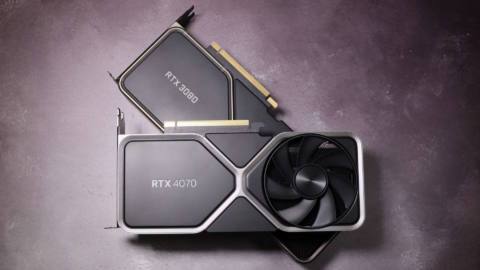AMD's new Zen 5 CPUs, AKA the Ryzen 9000 series, are shaping up very nicely indeed. But if there is a doubt over AMD's latest CPU family, it's that it carries over essentially the same 4nm silicon as Zen 4. Well, not for long, it turns out.
AMD's long-time leading chip maestro Mike Clark, who has worked on AMD CPU designs for over 30 years, says that plans are afoot for a 3nm respin of the Zen 5 architecture. What's more, it's all happening very fast.
Speaking to Tom's Hardware, Clark said that AMD wanted the the flexibility of using both nodes for Zen 5 despite the challenges that posed.
“We need that flexibility in our roadmap, and it makes sense. But still that was really hard to try to control having the two technologies and the features, and a feature that looks great in 3nm not looking so great in 4nm because of the power impact of the not-as-efficient transistor and how it affects the floorplan,” Clark said.
Interestingly, from a timing perspective it sounds like 3nm Zen 3 could be along very soon. “We're going to deliver 3nm here in short order with 4nm; basically, they're on top of each other,” Clark revealed.
Previously there have been rumours that 3nm would be used for the Zen 5C compact core rather than the full Zen 5 design. However, Clark didn't talk specifics, so we'll have to wait and see about that.
For our money, the chip we'd most like to see make the jump to 3nm is AMD's APU line for laptops and handhelds. Seeing the new Strix Point APU using 4nm silicon is a bit of a worry for battery life.
AMD's existing Phoenix and Hawk Point APUs don't exactly offer great battery life in a handheld gaming context using 4nm silicon. So, the prospect of an even more powerful chip on 4nm with more GPU cores hardly bodes well for battery life.
Of course, as we discussed recently, it turns out that the revised RDNA 3.5 GPU in Strix Point has been tweaked to improve efficiency. So, those gains will be available even on 4nm. But every little helps, and RDNA 3.5 plus 3nm does seem like an appealing combo for mobile gaming.

Best gaming PC: The top pre-built machines.
Best gaming laptop: Great devices for mobile gaming.
Clark also hinted that AMD might bring its compact Zen 5C cores to the desktop. Currently, they're reserved for mobile CPUs. “If we keep building the compact cores in the way that we talked about, the hard part is really making sure we hit the right frequency point so that it's balanced with however many [cores] you're going to put down. But let's say you're really good at that, then there's no reason not to put a compact core on a desktop,” he said.
Clark also said that using compact cores could mean achieving the same performance at a given core count for less money or being able to squeeze in even more cores on the desktop. So, compact cores could well be a thing on the desktop, soon.
It's worth pointing out in all this that the fact AMD is working on 3nm Zen 5 chips doesn't necessarily mean we'll see them in gaming desktops, laptops and handhelds. AMD could be plotting 3nm chips for servers, workstation or embedded applications and Clark didn't reveal any specifics.
On the desktop where power consumption isn't critical, 3nm probably wouldn't be a dramatic leap anyway. But 3nm laptop and handheld Zen 5 CPUs could be pretty sweet. So, here's hoping AMD has plans afoot in that regard.





